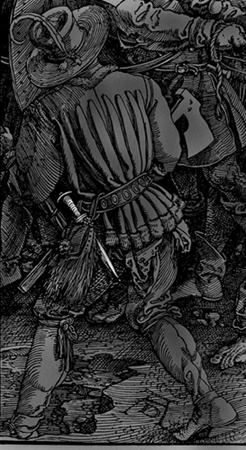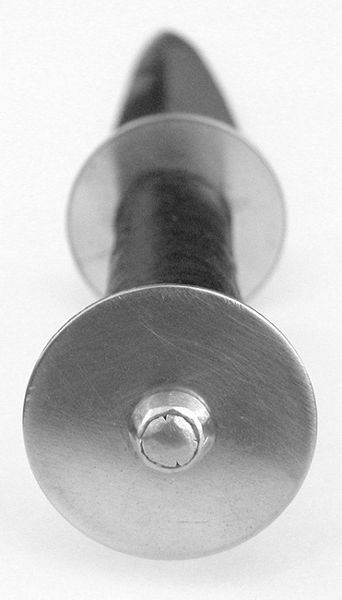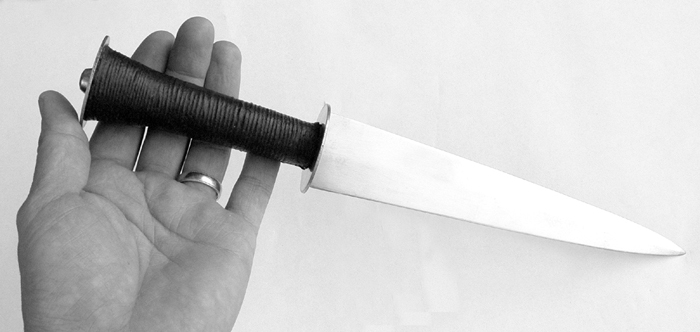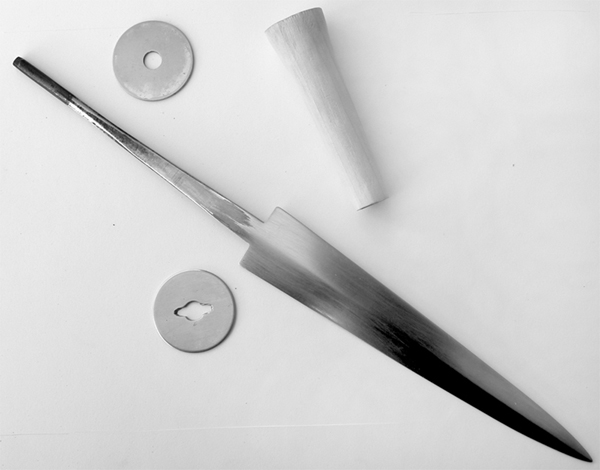Components for my project included an 8" Arkansas Toothpick blade from Atlanta Cutlery (approx. $12), two large washers from Lowes, poplar for the grip, chamois for the grip cover (no cord underwrap-I've found that a temporary cord overwrap during drying gives the neatest effect), and a modified wing nut for the pommel nut. That's it. Less than $20 in parts.
I assembled the piece with JB Weld, slipped on the modified wingnut and cold-peened the tang before the JB Weld set. Of course, it was much more work than that–carving, filing, wrapping, polishing, sanding, etc.
I'm not thrilled with my freehand shaping of the grip (a concave cylindrical taper is much more challenging than a straight taper unless you have a lathe, and I don't have one). The textured grip wrap is speculative and probably not correct, but I think it looks nice and improves the feel of the weapon (the horizontal lines on the grip in the first of the illustrations below don't suggest a wrap. Rather, I think they're just engraving lines to indicate the shape of the object). I switched lower rondels at the last minute and did a sloppy job of filing the replacement, so it doesn't quite sit flush with the blade as planned. The edges of the peen split slightly (another lesson learned), but I'm not unhappy with the result. This is supposed to be a common soldier's weapon, after all. The finished piece feels very comfortable, tight and strong, and the proportions seem about right, judging from the Dürer woodcuts. It looks kind of pitiful compared to Risto's recent creation, but I'm still learning.








